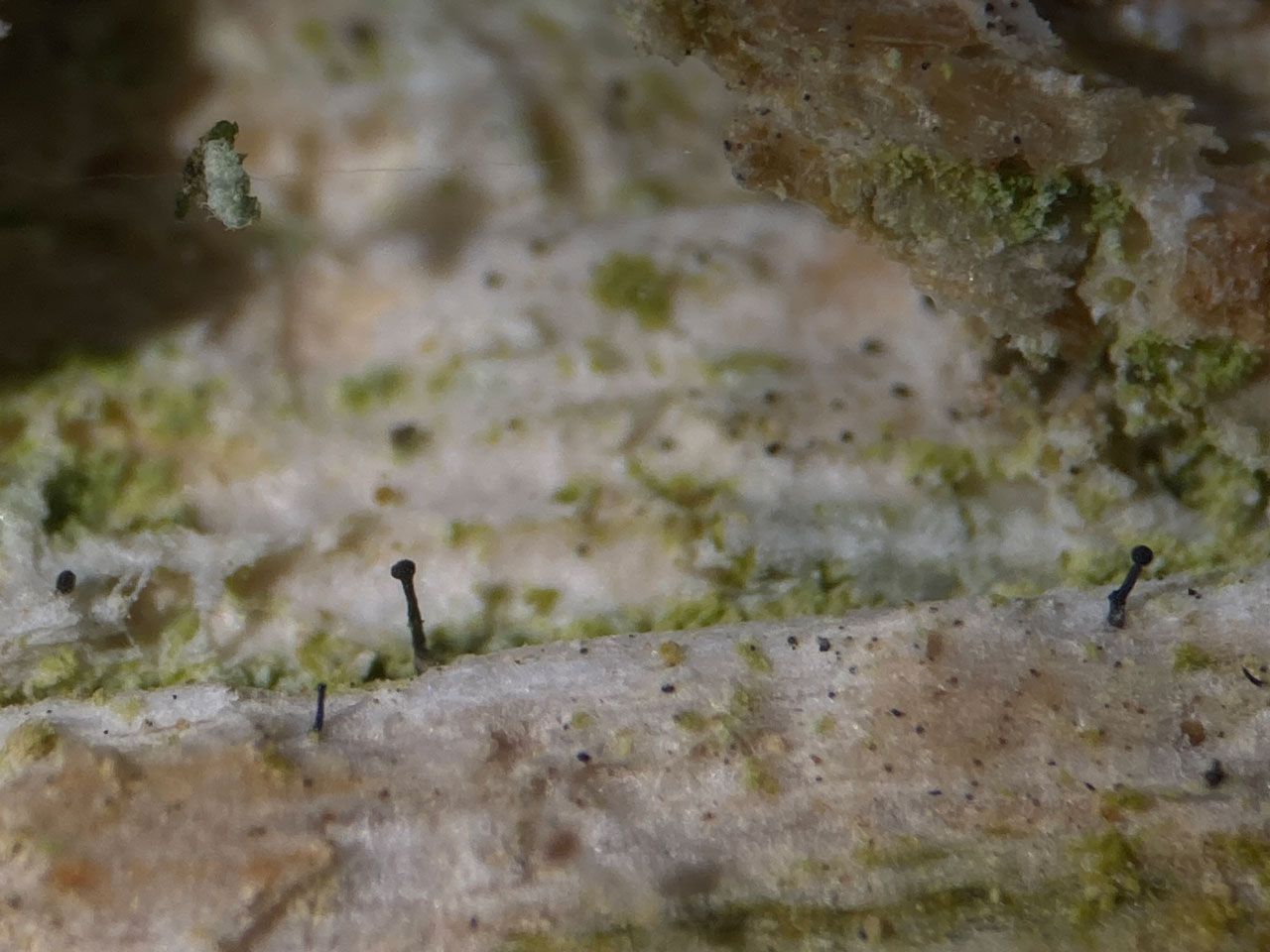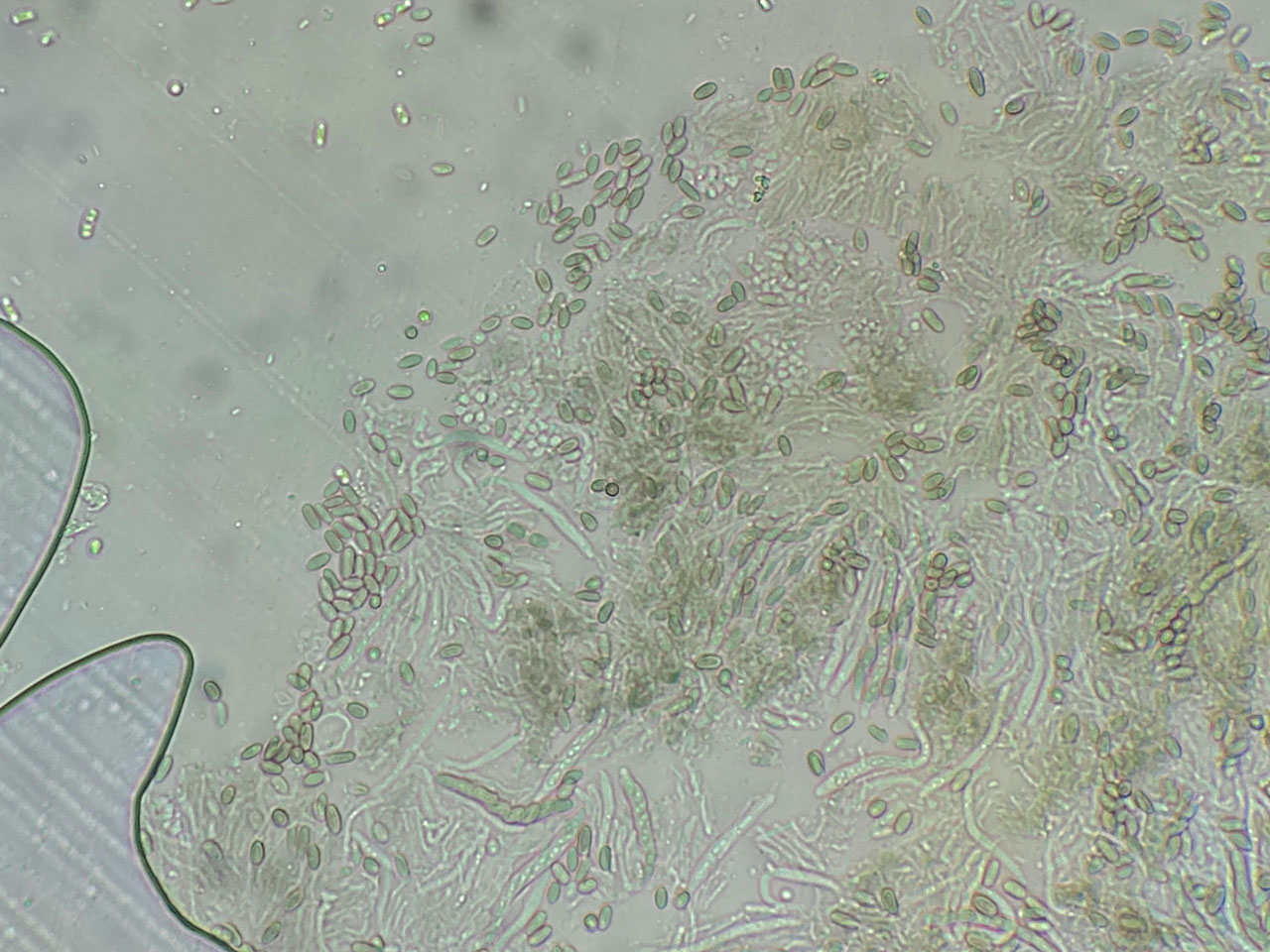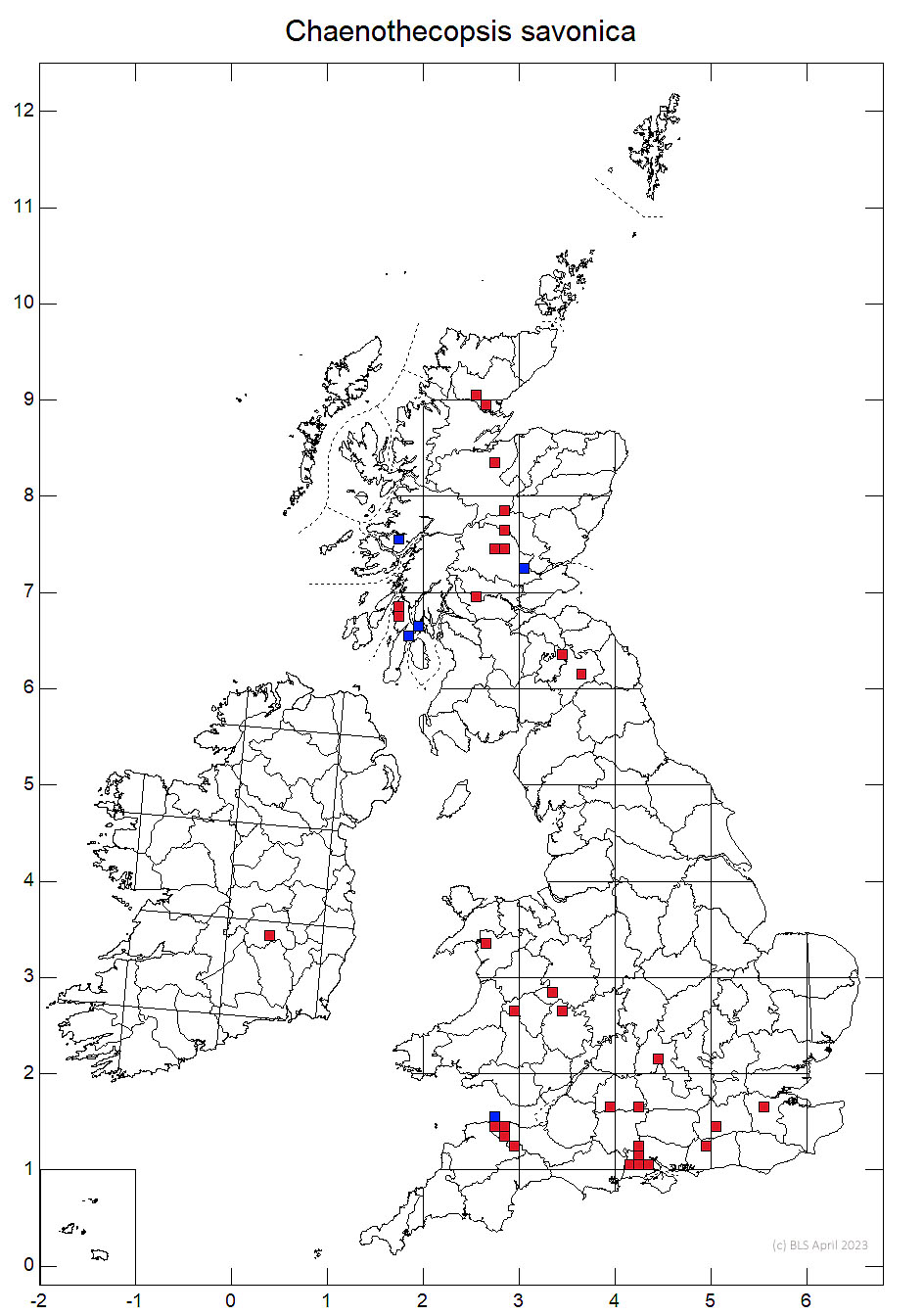Chaenothecopsis savonica
A widespread but rare Chaenothecopsis species, found on standing or part fallen weathered lignum and rarely on bark in sheltered conditions, usually in old growth pasture woodland or old parklands. Separated microscopically by the pale green and aseptate spores and the short asci up to 35 µm long.
Apothecia 0.4–0.8 mm tall, black or with a slight greenish hue, not pruinose; head 0.1–0.3 mm diam., globose to lenticular; epithecium thin, aeruginose to brownish, hypothecium similarly pigmented; stalk 0.03–0.07 mm diam., noticeably paler than the head, greenish to brown, internally pale or reddish brown, K–, N–, or partly aeruginose (K+ dull brownish, N± green intensifying). Asci to 35 µm long. Ascospores 5–7 × 2–2.5 µm, aseptate, pale green, ellipsoidal with rounded ends, the surface minutely warted. Small black conidiomata are sometimes present, the conidia 2–3.5 × ca 1 µm, colourless, truncate below.
Chaenothecopsis pusilla differs in possessing darker brown, 1-septate spores. Similar species with aseptate spores are found parasitising Trentepohlia-containing lichens, see Chaenothecopsis australis and Chaenothecopsis species 1.
Loosely associated with Stichococcus on bark or lignum of old Oak and other acid-barked trees. Elsewhere, considered to be a parasite of Chaenotheca or found with free-living colonies of algae on both coniferous and deciduous trees (Tibell 1999).

Rare S. England and Wales, scattered throughout Scotland, rarely seen in Ireland.
Encountered less often than Chaenothecopsis nigra or C. pusilla, but still widespread and recorded rather more widely than when it was assessed as Near Threatened. Found on lignum and rarely bark of veteran trees in sheltered conditions, usually in old growth pasture woodland or old parklands. Increasing shade in woodland is a potential threat.
Britain: Near Threatened
Scotland: Priority Taxon for Biodiversity in Scotland
Wales: Vulnerable
Sanderson, A., Cannon, P., Coppins, B., & Simkin, J. (2025). Mycocaliciales: Sphinctrinaceae, including Chaenothecopsis, Mycocalicium, Phaeocalicium, Sphinctrina and Stenocybe. Revisions of British and Irish Lichens 52: 1–15.
Tibell, L. (1999). Chaenothecopsis. Nordic Lichen Flora 1: 40–49.
Text by Neil A Sanderson based on Sanderson et al (2025)


